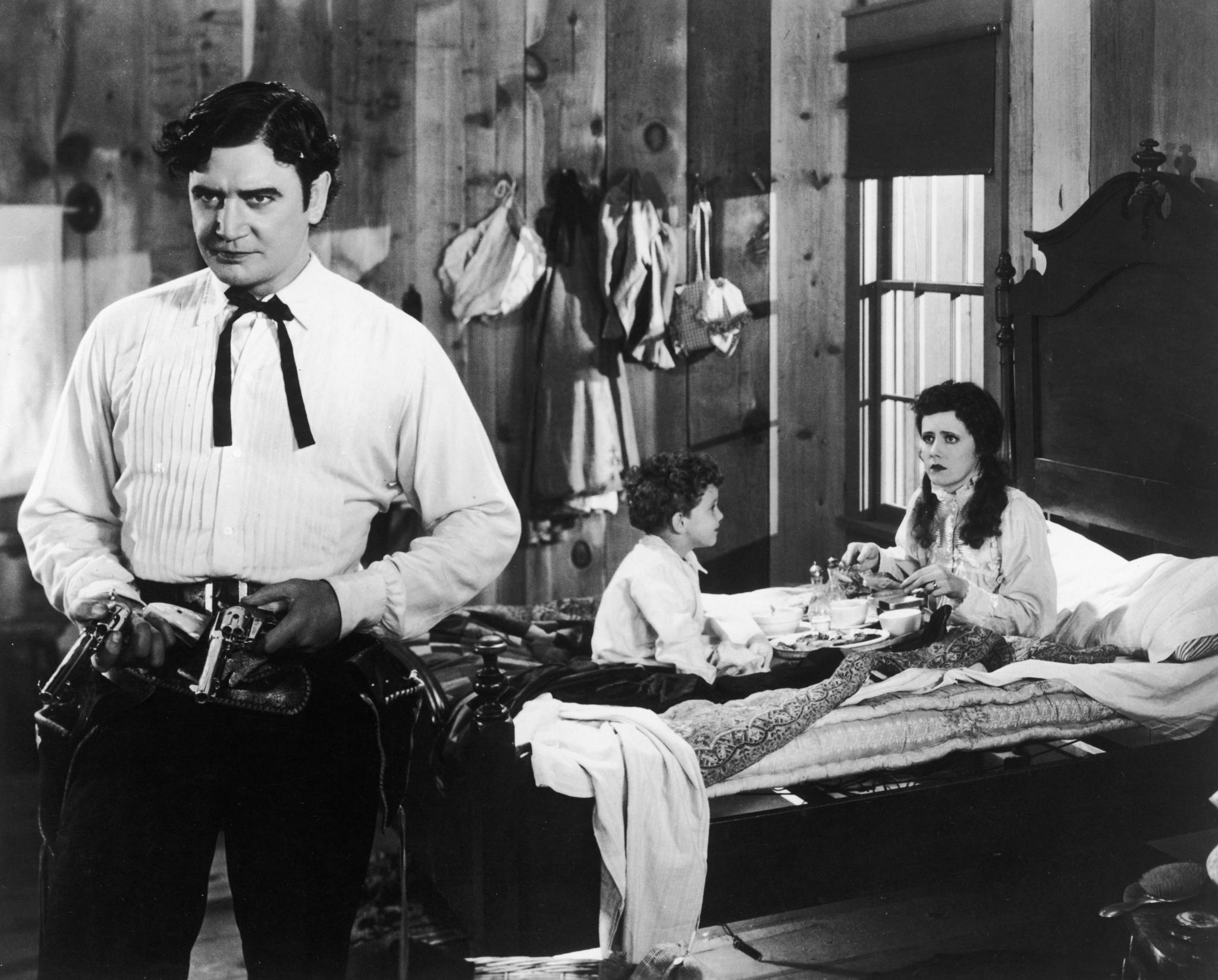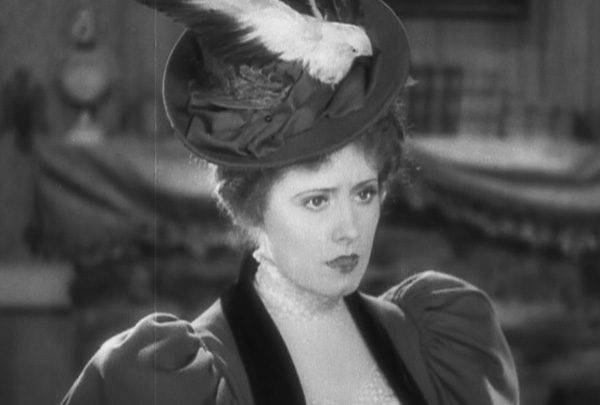Best Picture: Cimarron
The Other Nominees: East Lynne; The Front Page; Skippy; Trader Horn
Cimarron is bad. It’s meandering, scattered, dumb, racist, pretentious, and utterly uninterested in characterization, but more than that, it’s bad. (The Broadway Melody wasn’t good either, but at least that film had the decency to not be two hours long.) All that being said, it’s easy to see why this won Best Picture – it fashions itself as a sprawling epic, stretching from 1889 to 1930, but instead of being the portrait of a burgeoning nation, like it thinks it is, it’s really just evidence that Edna Ferber (who wrote the source novel) read way too much Willa Cather and John Steinbeck. If you’re going to try to emulate two of the finest prose stylists that America ever produced, it helps to have some basic knowledge of how story works. Cimarron does not.
There is one decent sequence in Cimarron, though, and that’s the 1889 land rush, when two million people rode west into Oklahoma to scoop up the newly available land. Director Wesley Ruggles does an okay job staging this, although the use of fast-motion is an unfortunate choice, but the sheer spectacle does most of the work. When you needed thousands of horse riders and covered wagons in 1930, well, you went out and got them. This is the one part of Cimarron that approaches the grandeur of old Hollywood.
Old Hollywood, coincidentally, is the only time and place where you could give your rough-and-tumble hero a name like “Yancey Cravat.” Yancey takes his wife Sabra out to Osage, OK to set up stakes, which is the first of many times in this film wherein everything breaks his way. The main problem with Cimarron, and there are several, is that it’s less of a story and more like two hours of everyone talking about how great Yancey is. The second he rolls into town, it’s evident that he knows everyone he needs to, from the local bandit The Kid to gambling tent owner Old Grat. They even know the name of the newspaper he’s set to establish, the Oklahoma Wigwam.
This serves to remove any tension from the Cravats’ arrival in Osage. Take, for example, Deadwood, which is a far better exemplar of the kind of story that Cimarron is trying to tell, that of the difficult birth of civilization. When Seth Bullock and Sol Star ride into the titular mining camp, they don’t know anyone and have adversaries on all sides. They fight for recognition, and for personhood. Yancey, by contrast, has already been a topic of discussion even before his arrival (a local thug named Lon Yountis sidles up to him at a bar and asks, “So you’re Cravat, huh?”).
Cimarron never wants you to forget how great Yancey is, and the amount of time it spends illustrating this point is frankly embarrassing. He rescues Sol Levy from Lon and his men (with an expertly-placed shot through Lon’s liquor bottle); he gets called on to lead the town’s first church service (before beginning his sermon, he’s already referring to the townspeople as “my flock”); he’s a lawyer as well as a newspaper editor; he single-handedly takes out the Kid and his gang, and the Kid basically dies apologizing to Yancy for the inconvenience. He also mocks an employee’s stutter, which the film thinks is hilarious. At least Richard Dix does an okay job with the character, although after a while he starts to seem like Hobie Doyle, Alden Ehrenreich’s character from Hail, Caesar! Except that Dix is deadly serious in his performance.
And let’s not forget how goddamn racist this character, and this movie, is. The film fetishizes Native American culture through Yancey, and his appropriation of their culture is one of the film’s most uncomfortable aspects. When he wants to intimidate Lon, he performs a “Cherokee death cry,” and even though he decries Western expansion, he has no compunctions about taking part in it. Later in the film, he wants to grant citizenship to “the red man,” and his entire attitude towards Native Americans is reminiscent of the ugly stereotype of the “noble savage.”
That’s not even touching on Isaiah, who even by 1930s standards is a harmful caricature. I’m honestly surprised that the was played by an actual African-American kid, and not a white kid in blackface. Cimarron pulls out every racist stop it can think of, from Yancey pointing out to Isaiah that there are watermelons for sale, to Isaiah shining shoes, to his Chicken George way of speaking. Isaiah delivers cringe-inducing dialogue like “Yes sir, I’m glad I came to Oklahomy” and “I pleased to dress myself up Sunday style.” And needless to say, he pronounces “sure” as “sho.”
There’s a serious problem with the film’s dialogue as well. Yancey talks like a character out of Shakespeare, which is fine if you’re in a Cormac McCarthy novel, but here he just sounds like a madman. He says things that no one has ever said in real life, like “This is the first time I’ve fronted your iron, Kid” and “Threatening to make Osage the terror of the Southwest, as in the old days of the Cimarron?” This would be less jarring if anyone in Cimarron spoke like Yancey, or even if Yancey was consistent in doing it himself.
To the film’s credit, Cimarron moves at a nice clip in its first hour, which is one of the benefits of having such an overstuffed cast. It’s when Yancey leaves – for the first time – that the pace begins to drag. The film attempts to turn itself into an epic, an ambition it hadn’t shown any signs of previous to this. Upon Yancey’s return, it’s evident that no one in Osage has moved on without him, and indeed they wile away their hours trading rumors about him (such as him living in Cherokee or Kickapoo country, because of course he would be welcomed into the tribe). Every time Yancey leaves, a product of his insatiable wanderlust, his adventures happen offscreen and we get to watch the characters on screen pine away for him. By the film’s conclusion, in 1930, the Oklahoma Wigwam has grown into a major paper, and the staff is pretty much the same. The film’s message is clear: only Yancey is allowed adventures of his own, only Yancey is allowed upward mobility or agency. (Sabra and Rickey, the printer whose stutter Yancey mocked, are only at the paper because Yancey gave them jobs.)
There’s a version of this story that works. It’s not impossible for a film to switch stories, or even genres, several times. The Place Beyond the Pines is a wonderful example of what it looks like when a film does this successfully. But Cimarron is inordinately impressed with itself, to the point that it assumes the audience will be too. It’s a commonly held belief that Crash is the worst Best Picture winner, but after watching Cimmaron, I think it has some real competition. My advice for anyone who wants to watch the film: go watch Deadwood instead.
Previously: All Quiet on the Western Front
Next Up: Grand Hotel



